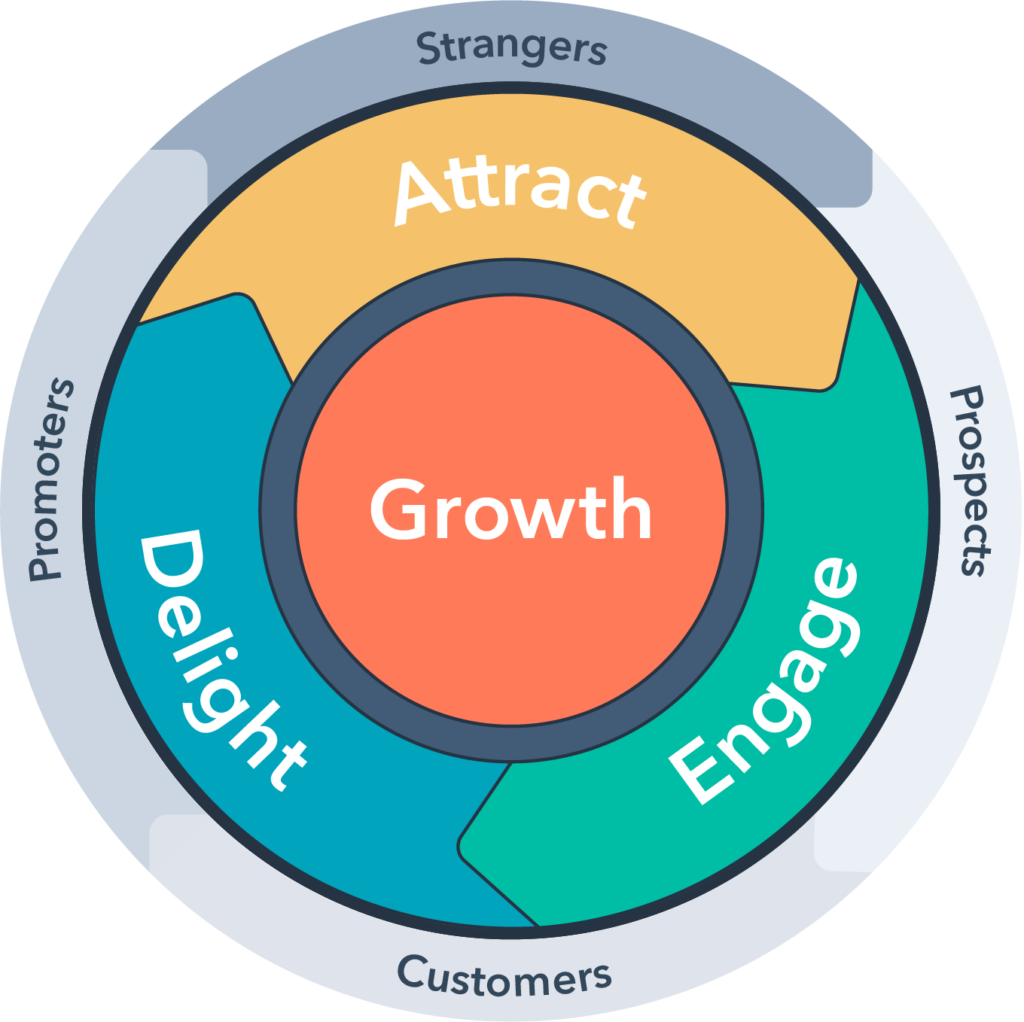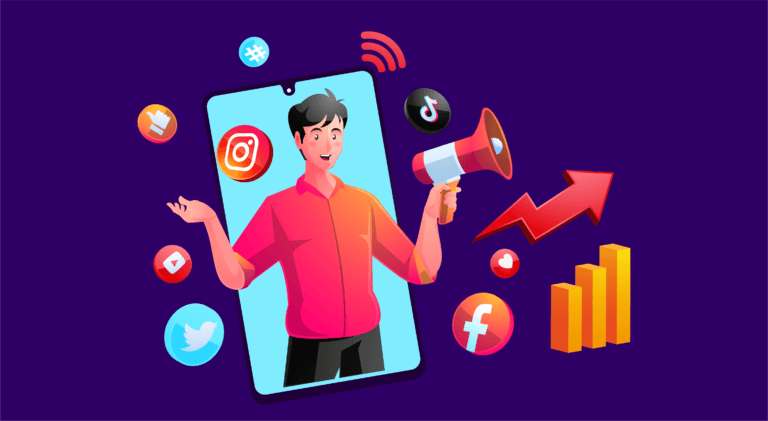
Table of Contents
- Introduction to Inbound Marketing
- Byju’s Marketing Strategy
- What is Byju’s?
- Byju’s Inbound Marketing Strategy
- Byju’s Strategy During COVID-19 Lockdown
- Lessons Learned from Byju’s Marketing Strategy
- Key Takeaways
- Conclusion
- FAQs
Inbound marketing is a strategy used to attract customers by creating smart, valuable content that’s tailored according to them. It’s a method to grow your business by building lasting, meaningful relationships with your prospects, customers, and consumers. It’s about empowering and valuing these people to help them reach their goals while they journey with you.

Inbound marketing is applied in three different ways. They are as follows:
- Attract: This is done by attracting the right audience with valuable conversations and content that establishes yourself as an advisor they can trust and engage with.
- Engage: Presenting solutions and insights that align with the customers’ goals and pain points so that they are more likely to purchase from you.
- Delight: Providing customers with the support and help they need to find success with whatever they purchase from you.
Learning happens best with practice and examples. This article will discuss the best inbound marketing examples like Byju’s inbound marketing strategy and the lessons we can learn from it.
Byju’s Marketing Strategy
When talking about the best inbound marketing campaigns, Byju’s marketing strategy is one that you can analyze and learn from.
What is Bjyu’s?
Byju’s is an ed-tech giant in India that provides a smart platform for teachers and students. Created by Byju Raveendran, the platform was developed in 2011 by Think and Learn Pvt. Ltd.

The platform provided an opportunity for students to learn from some of the best teachers in the industry. The digital marketing company found that during the pandemic in March and April 2020, it received 13.5 million users.
In the beginning, Byju’s marketing strategy faced many execution and planning challenges. But in the end, it survived and became a popular name in the teaching industry.
Byju’s Inbound Marketing Strategy
Byju’s target audience includes students from grade one to grown-up students trying to clear different entrance exams like CAT, IAS, JEE, etc. Byju also targets parents of such students.
Byju’s promotional strategy online did not perform very well. It faced several challenges regarding social media and search engine marketing. The main problem was finding the right keywords and also proper implementation.
The learning app failed to draw in students because they wanted their doubts cleared rather than buying the courses. Hence, it was hard for the platform to influence its target audience.
The platform knew that social media was a good place to get many leads, but the problem was that very few leads were closing. As a result, they soon decided to reconsider their digital marketing strategy.
They noticed that the real issue was their audience, the students. These students were their target audience, but they were not the actual buyers of the courses. The real buyers were parents. Hence, Byju’s redesigned its digital marketing strategy to tackle this problem.
Byju’s Strategy During COVID-19 Lockdown
Byju’s marketing strategy gained a lot of popularity during the lockdown. As the schools shut down, the app made its content free for all students. It also introduced live classes on their app. Analysts say that the app enrolled 13 million consumers between March and April. As online learning became the mainstay during the lockdown, India realized the importance of this app and virtual learning that Byju’s started offering much before the lockdown.
It has helped a lot of parents and students by providing them with a platform for online tuition. Students were able to find solutions to their problems right away. All they had to do was select the preferred subject and the time slot for free. Students were also provided with interactive videos, practice tests, and revision.
Lessons Learned from Byju’s Marketing Strategy
1. Brand ambassador
Having a brand ambassador was one of the most powerful decisions of Byju’s promotional strategy. No doubt having an ambassador gives a face to any brand, and Byju’s brand ambassador was the popular actor Shah Rukh Khan. Disney was another ambassador for the brand. It is the most loved company that has been entertaining kids for years.
2. Collaborations and sponsorships
When brands sponsor events or collaborate with other brands, they can pitch to different customer bases of those brands they partner with. Byju’s app promotes itself with sponsorships and collaborations.
3. Bridging the gap between millennials and Gen Z
Byju’s marketing strategy bridges the gap between the millennial and Gen Z generations. The edtech company offers the Gen Z generation a great learning experience. The brand also offers great content like Disney stories, interactive videos, and fun educational games.
4. Search Engine Optimization
It’s important to understand that not every strategy will work for every brand. Unfortunately, the search engine optimization strategy did not work well for Byju’s. Analysts said the app needs to improve its web experience and optimize the pages for conversions.
5. Digital ads
Apart from the SEO strategy, another strategy that did not work for Byju’s was digital advertising. This included Facebook ads and Google ads. Byju’s Facebook ads generated leads, but those leads were not useful. The Facebook ads targeted students interested in the platform, but the students were not buyers. Google ads also did not work for the brand because of the lack of buying intent of the students. So, it did not generate conversions through digital ads.
Thus, it can be seen that Byju blended digital marketing and traditional marketing strategies well, which helped it in surviving and outshining. In 2020, it earned Rs 2800 cr in revenue and witnessed the busiest three months due to the impact of COVID-19.
Key Takeaways
- Inbound marketing is a strategy that is used to attract customers by creating smart, valuable content that’s tailored according to them. It’s a method used to grow your business by building lasting, meaningful relationships with your prospects, customers, and consumers.
- Having a brand ambassador was one of the most powerful decisions of Byju’s promotional strategy. No doubt having an ambassador gives a face to any brand and Byju’s brand ambassador was the popular actor Shah Rukh Khan.
- Byju’s app promotes itself with sponsorships and collaborations.
- Byju came up with a learning application and offered the Gen Z generation a great learning experience. The brand also offers great content like Disney stories, interactive videos, and fun educational games.
- It’s important to understand that not every strategy will work for every brand. So, brands need to find the right strategy by analyzing their competitors and performing proper market research.

Conclusion
Now that you’ve learned about Byju’s inbound marketing strategy, it’s time to start building yours. It’s important to keep in mind that not every marketing strategy will always work for a brand. So, brands need to find the right strategy by analyzing their competitors and performing proper market research before they build their very own strategy.
FAQs
The four tools of inbound marketing are attract, convert, close, and delight.
Here are a few ways you can grow your inbound marketing:
1. Get found in organic searches
2. Use social media well
3. Use off-site SEO tactics
4. Use content offers strategically
5. Optimize high-traffic landing pages
The different types of inbound marketing are as follows:
1. Videos
2. Blogs
3. Pillar Pages
4. Guides
5. Ebooks
6. Social Media
7. Press Releases
8. Infographics
9. Newsletters
Here are a few steps to create an inbound marketing strategy:
1. Building buyer personas
2. Set inbound marketing strategy objectives
3. Outline your customers’ marketing triggers
4. Create a list of keywords
5. Align content to the buyer’s journey
6. Create a lead nurturing process
7. Conversion-focused blogging.
The five inbound marketing principles are standardize, contextualize, optimize, personalize and empathize (S.C.O.P.E).
Latest Blogs
Explore how Google’s 2025 AI search updates triggered ranking chaos. Learn actionable strategies to adapt your SEO for AI Overviews, zero-click searches, and SERP volatility. Stay ahead now.
Learn how to rank on AI search engines like ChatGPT, Perplexity, and Gemini by optimizing your content for authority, structure, and relevance. Stay ahead in AI-driven search with this strategic guide.
Explore the best healthcare SEO services for your medical practice. Improve online visibility and effectively reach more patients in need of your services.


